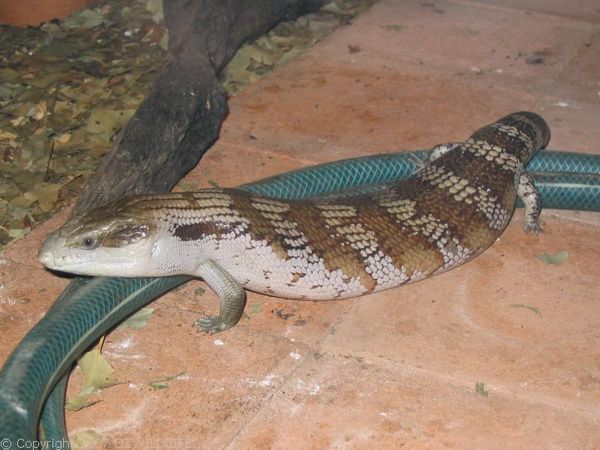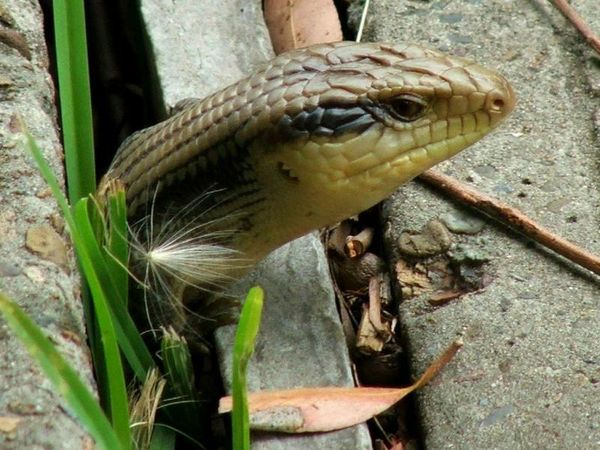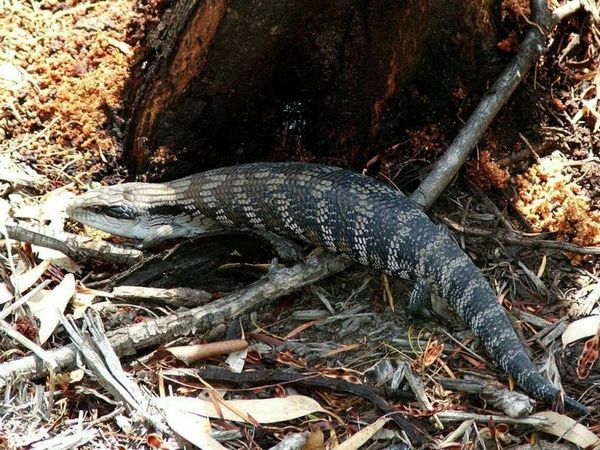|

Common Blue Tongue lizard photographed at Lone Pine Koala Sanctuary, Brisbane, Queensland.
Image by ozwildlife - Some rights reserved.
|

Common Blue Tongue
Photograph copyright: Nickolay Tilcheff - all rights reserved. Used with permission.
|

Common Blue Tongue
Photograph copyright: Nickolay Tilcheff - all rights reserved. Used with permission.
|
|
|
COMMON BLUE TONGUE FACTS |
Description
The Blue-tongue lizard is a large skink about 30-40cm long. It is brown and black blotched on a cream body with usually a dark band behind the eyes. They are easily recognised by their bright blue tongue
Other Names
Eastern Blue-tongue
Size
30-40cm
Habitat
open country with lots of ground cover such as tussock grasses or leaf litter. They shelter at night among leaf litter or under large objects on the ground such as rocks and logs. They are sometimes found in suburban gardens.
Food
Blue-tongues are not very agile and eat slow-moving prey such as snails, beetles and other insects.
Breeding
usually about 10 live young are born measuring 13-14cm. The young are ready to look after themselves straight after birth, and disperse within a few days.
Range
Wide range from Broome in WA across NT, and down east coast of Australia.

Credits:
Map is from Atlas of Living Australia website at https://biocache.ala.org.au licensed under Creative Commons Attribution 3.0 License.
Notes
Blue-tongued lizards are the largest members of the skink family
Classification
| Class: | Reptilia | | Order: | Squamata (Sauria) | | Family: | Scincidae | | Genus: | Tiliqua | | Species: | scincoides | | Common Name: | Common Blue Tongue |
Relatives in same Genus
Centralian Blue-tongue Lizard (T. multifasciata)
Blotched Blue-tongue Lizard (T. nigrolutea)
Western Blue-tongue Lizard (T. occipitalis)
Shingleback (T. rugosa)
Northern Blue-tongue (T. scincoides intermedia)
|
|

